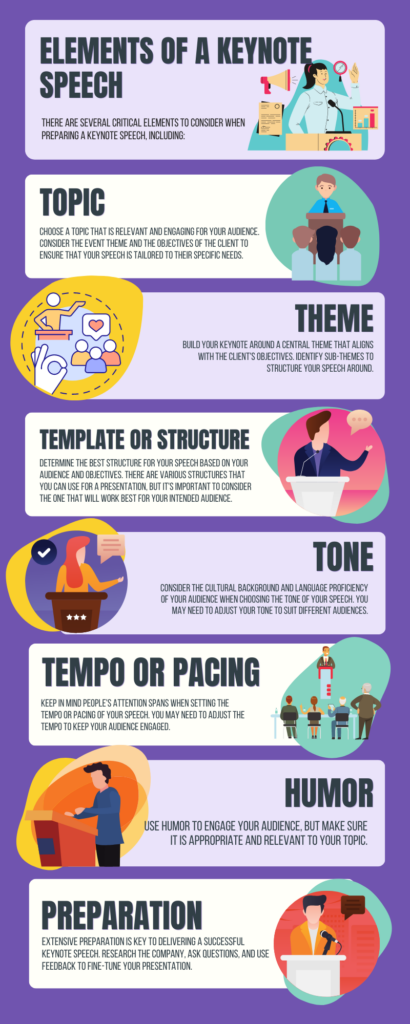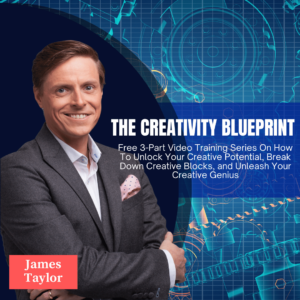How to Prepare and Deliver a Keynote Speech: James Taylor's Expert Advice
I'm James Taylor, a keynote speaker on creativity, innovation, and future trends. Today, I'm in beautiful Cancun, Mexico.
Introduction:
- Introduction to James Taylor and his recent keynote speech in Cancun, Mexico
- The purpose of the podcast is to discuss James Taylor's keynote speech preparation process and what makes a successful keynote presentation
Taylor's Seven T's
- Explanation of Taylor's Seven T's, James Taylor's keynote speech preparation process
- The importance of a discovery call and understanding the client's objectives and goals
- The significance of conducting research on the company and asking for their brand guide and annual report
- The value of pre-event calls with senior leadership to discuss specific goals and objectives
- How personalized feedback and conversations with the team can help make further adjustments to a presentation
Keynote Structure
- The importance of considering the structure that will work best for the intended audience
- The various structures that can be used for a presentation
- The significance of tone and humour to engage the audience
- The influence of the audience's cultural background on the tone of the presentation
- The importance of remaining evidence-based and accessible to non-native English speakers
Post-Presentation Debriefing
- The significance of reviewing the video of the presentation and looking for ways to improve
- The importance of getting feedback from the client, both written and verbal
- The value of case studies on James Taylor's website to give feedback on his services
- Conclusion and invitation for comments or reaching out to James Taylor
Conclusion:
- Recap of James Taylor's keynote speech preparation process and the critical elements for a successful keynote presentation
- The importance of personalized feedback, cultural considerations, and remaining evidence-based.
FULL TRANSCRIPT
Hello, I'm James Taylor and I'm speaking about creativity, innovation, and future trends from Cancun, Mexico, where I was the closing keynote speaker for an International Management Conference hosted by one of Europe's biggest companies. In this video, I'm going to share with you my process for writing, preparing, and delivering a keynote. This information is useful if you're looking to book a keynote speaker, as it can help you understand the questions to ask and how to prepare the speaker for the best possible keynote. However, if you're a keynote speaker, this video can provide some insight into how I prepare and deliver my keynotes, although every speaker has their own approach. For me, each keynote is tailor-made for the client, which means that no two speeches are the same. Unlike some speakers who give the same speech with minor changes, I delve into future trends, which are always evolving, and I focus on understanding the organization.
I will now share what I call Taylor's 7 T's, my preparation process for a keynote. The client approached me in November, and we had a discovery call to ensure we were a good fit for each other. During this call, I explored the topic for their event and what attracted them to me, which was to talk about innovation. We also discussed the theme of the event, which was Destination Now, and I delved deeper to understand their objectives, goals, and audience. From this information, I identified sub-themes to build my keynote around, which align with the client's objectives.
Following this call, I had another conversation with the senior leadership and another pre-event call with eight people, including the CEO. I did extensive research on the company, and I asked them to provide their brand guide and annual report. During the pre-event call, I asked a lot of questions to understand their specific goals and how my keynote could support the CEO's objectives for the event. I do this level of preparation, but not all speakers do. This is simply what works for me.
About 25% of the clients you work with may suggest changes, such as adding more detail or focusing on specific areas. Sometimes, they may even mention that another speaker will cover a particular topic, which is helpful. In one instance with a client, they provided me with a lot of feedback, which allowed me to make small adjustments to my presentation. However, even after these tweaks, I still felt that I was only about 90% there. The client had the great idea of inviting me to spend time with their team a few days in advance, where I could have conversations with them over drinks and dinners. This helped me to make further adjustments to my presentation based on the phrases and feedback I had heard. I was able to use this feedback to personalize my speech further and be super prepared when I went on stage.
Before writing my presentation, I think about the template or structure that I will use. There are various structures that you can use for a presentation, but it's important to consider the one that will work best for your intended audience. For instance, in this case, I had a definite sense of the structure I wanted to use. I had 60 minutes, which gave me ample time to achieve my goals. You can watch some of my other videos, where I talk more about templates or the structures of a keynote.
Another thing that I consider is the tone. Since this was a global audience with people from America, Europe, Asia, and Latin America, I had to go in with a certain kind of tone that would appeal to all. I tend to go higher on the entertainment value for American audiences, whereas for Eastern European audiences, I tend to focus more on data and evidence. In this case, I opted for a quick, fast-paced tone that would appeal more to North American audiences, while still remaining evidence-based and accessible to non-native English speakers.
Humour is another way that you can engage your audience, and I used it at the start of my keynote to test the audience's limits. I was agile and improvisational throughout my presentation, which was quite fast-paced. In the end, the tempo or pacing of my speech was a little faster than what I might have done before COVID, as people's attention spans have shortened.
To summarize, the critical elements that I consider when preparing a keynote speech are the topic, theme, target audience, template, technique, tone, and tempo. Each of these components is essential in creating a successful presentation that engages your audience and meets your goals.
A lot of people have asked me, and they asked me last night, how I prepare, so I wanted to share that a little bit. What I'll do is, after my performance, I will debrief, probably on the flight back. I will look at the video and watch to see if I can improve certain things. Additionally, the client will receive feedback. I received feedback yesterday, which was dated but it came out really well. However, I also want to get some other types of feedback from them, such as written feedback. Often, I'll do a case study. If you go to my website, JamesTaylor.me, you'll find case studies from many of my clients which give feedback on how they experienced working with me. Hopefully, that's useful. Please leave any comments, and feel free to reach out to me on my website at JamesTaylor.me. My name is James Taylor, keynote speaker on creativity, innovation, and future trends. Thank you for watching.
Sustainability Keynote Speaker
Metaverse Keynote Speaker


